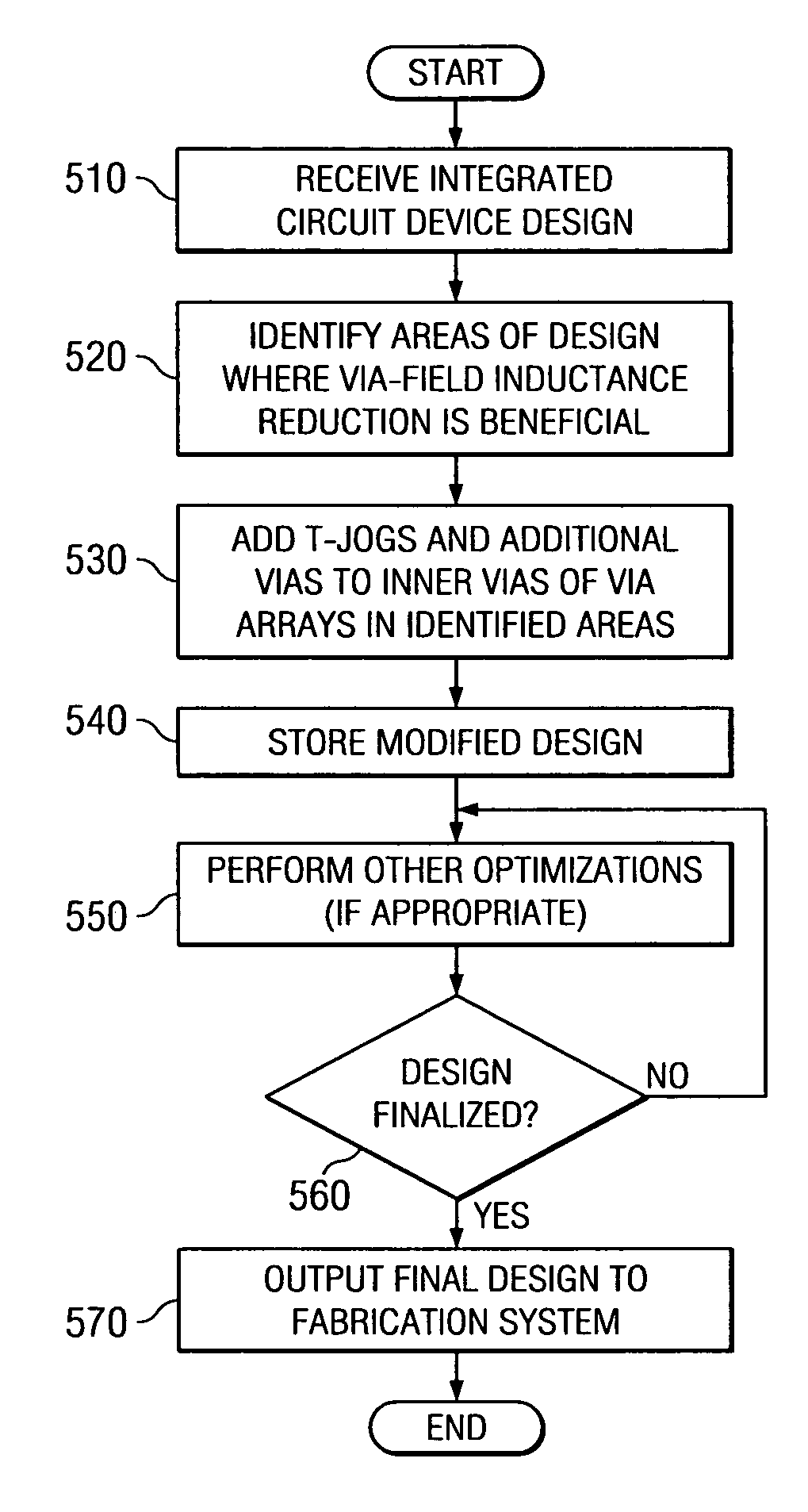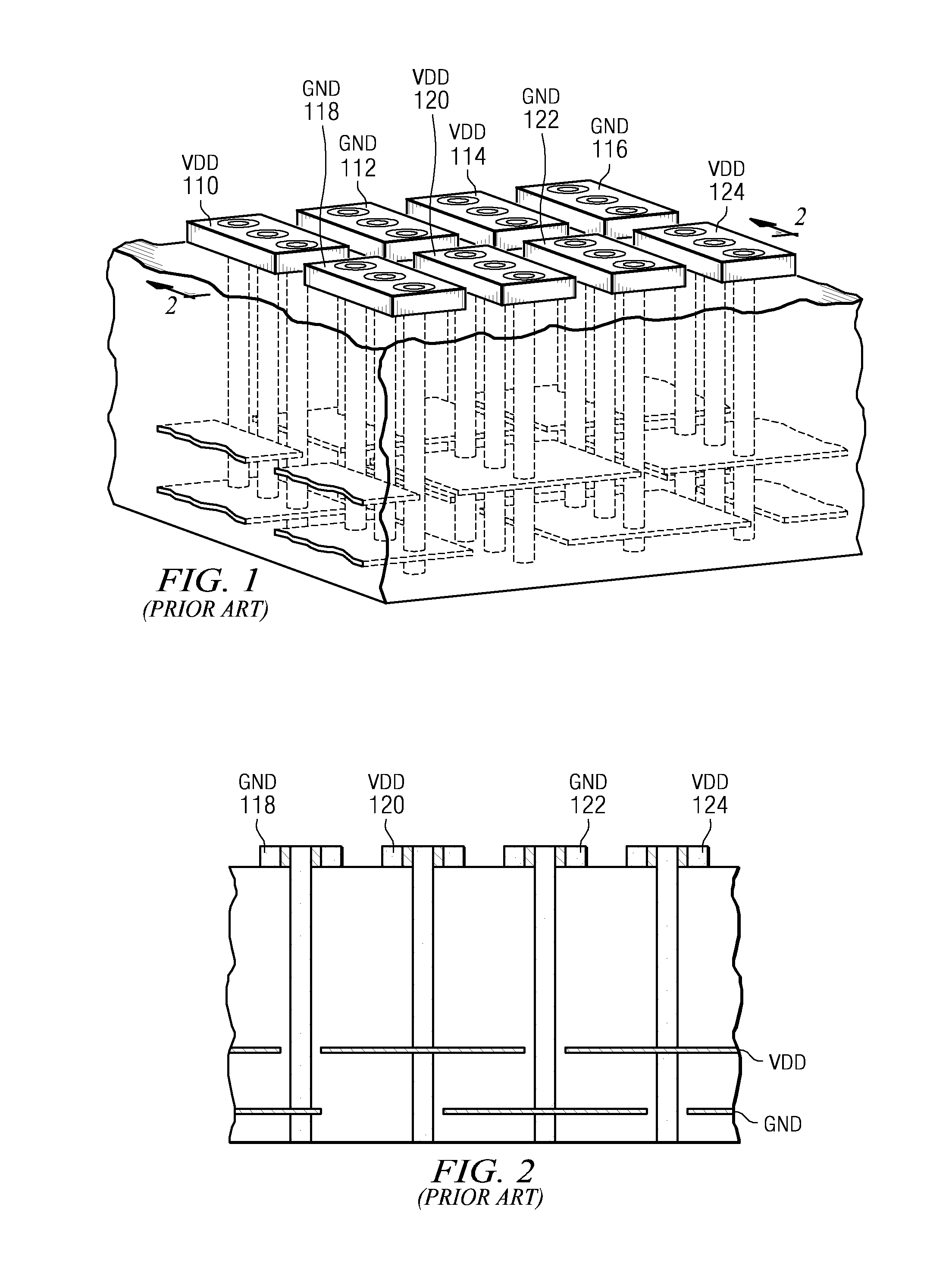Fabricating substrates having low inductance via arrangements
a technology of fabricating substrates and via arrangements, which is applied in the direction of auxillary welding devices, instruments, soldering apparatus, etc., can solve the problems of proportion of the integrated circuit negatively affecting other portions of the integrated circuit, and achieve the effect of increasing the capacitance and minimizing the inductan
- Summary
- Abstract
- Description
- Claims
- Application Information
AI Technical Summary
Benefits of technology
Problems solved by technology
Method used
Image
Examples
Embodiment Construction
[0028]As previously described above, conventionally, vias are formed in a multilayer ceramic (MLC) substrate as straight via connections between a surface pad connection and an internal plane, e.g., the internal voltage (VDD) or ground (GND) planes. Such an arrangement does not minimize the inductance generated by the vias, i.e., the via-field inductance, since the distance between the vias tends to be maximized in such an arrangement.
[0029]One solution to reduce the inductance generated by the via-field is to introduce single “jogs” in the vias so as to bring them closer together, i.e. reduce the distance between the vias. These single “jogs” are essentially portions of the vias that run perpendicular to the conventional via, i.e. parallel to the internal planes of the MLC. The “jogs” may be formed as horizontal wirings in a wiring plane of the MLC.
[0030]FIGS. 3A and 3B are exemplary diagrams illustrating the arrangement of the vias in accordance with a known alternative configurat...
PUM
| Property | Measurement | Unit |
|---|---|---|
| current | aaaaa | aaaaa |
| via-field inductance | aaaaa | aaaaa |
| inductance | aaaaa | aaaaa |
Abstract
Description
Claims
Application Information
 Login to View More
Login to View More - R&D
- Intellectual Property
- Life Sciences
- Materials
- Tech Scout
- Unparalleled Data Quality
- Higher Quality Content
- 60% Fewer Hallucinations
Browse by: Latest US Patents, China's latest patents, Technical Efficacy Thesaurus, Application Domain, Technology Topic, Popular Technical Reports.
© 2025 PatSnap. All rights reserved.Legal|Privacy policy|Modern Slavery Act Transparency Statement|Sitemap|About US| Contact US: help@patsnap.com



